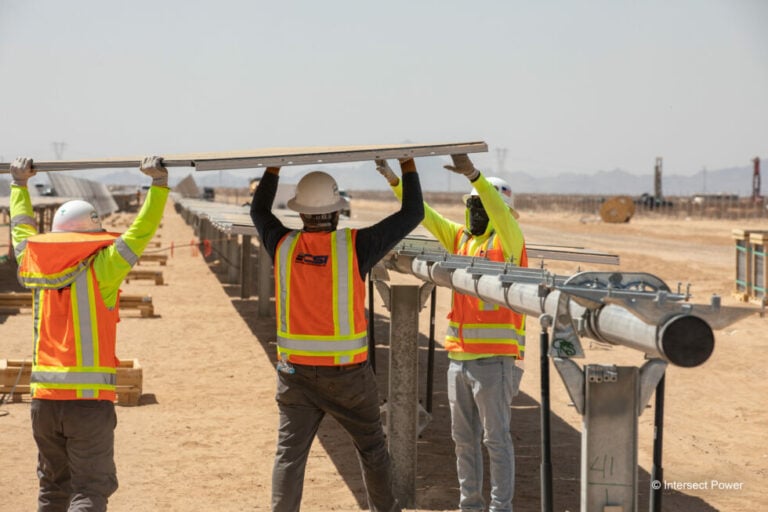
The White House’s Council on Environmental Quality (CEQ) has proposed a rule that would streamline and accelerate the permitting process for new renewable power facilities, as the US looks to decarbonise its energy mix.
The proposed rule, the Bipartisan Permitting Reform Implementation Rule, would enforce changes to the National Environmental Policy Act (NEPA), a broad piece of legislation that oversees permitting for projects on federal land and was signed into law in the 1970s. The changes were first proposed in May, when the US Congress raised the debt ceiling following months of debate, and the CEQ’s new rule would implement these changes to NEPA.
Unlock unlimited access for 12 whole months of distinctive global analysis
Photovoltaics International is now included.
- Regular insight and analysis of the industry’s biggest developments
- In-depth interviews with the industry’s leading figures
- Unlimited digital access to the PV Tech Power journal catalogue
- Unlimited digital access to the Photovoltaics International journal catalogue
- Access to more than 1,000 technical papers
- Discounts on Solar Media’s portfolio of events, in-person and virtual
Accelerating the permitting process for US solar installations is of particular importance, considering that an increasing number of projects are suffering from delays. The US’s Energy Information Administration reported last year that, in the first six months of 2022, 20% of utility-scale solar installations in the US saw delays, up from 17% in 2021 and just 11% in 2018. The number of severe delays also increased, with 3% of projects suffering from delays of six or more months in June 2022, the highest percentage since December 2021.
As a result, an average of 4.4GW of solar capacity was lost each month due to delays as of June 2022, compared to a loss of 2.6GW per month in the first half of 2021.
Accelerating the permitting process
“We need to accelerate and improve the permitting process in order to meet our ambitious climate and clean energy goals,” said John Podesta, senior advisor to the president for clean energy innovation and implementation. “That’s why President Biden has made permitting a top priority of senior administration officials for the first time in history.
“Today’s proposed regulations represent our administration’s next step on permitting to help accelerate infrastructure and clean energy deployment while promoting meaningful public input and advancing environmental justice.”
The CEQ’s proposed changes include imposing a two-year limit on environmental impact studies for new projects on federal land and adding page limits for documents pertaining to environmental approval applications, in an effort to speed up the permitting process that has hamstrung many new clean energy projects.
The average time taken to complete an environmental impact study in the US, for instance, is four and a half years, more than double the limit proposed by the CEQ’s rule.
The new rule would also encourage companies seeking planning permission to consider the impacts of climate change on their facilities and engage in “early and meaningful engagement with communities” as part of the permitting process.
However, questions remain as to the government’s ability to enforce these reforms. Many of the CEQ’s proposals are presented as encouragements rather than hard and fast rules, with the White House saying of the idea for applicants to address climate change that: “agencies should consider climate change effects in environmental reviews.”
A wave of new legislation
In other legislative news, the Department of Energy released its Cleanup to Clean Energy initiative last week, a programme which aims to repurpose state-owned land once used for nuclear weapons testing for renewable energy projects.
The initiative identified five sites across five states that could be used for new clean power generation, and continued support from the government could be vital in helping the US meet its clean energy goals. The private sector has invested heavily in US solar in recent years, with First Solar committing US$1.1 billion for a new manufacturing facility in the US last week.
Elsewhere, the Federal Energy Regulatory Commission (FERC) proposed another draft rule that would reform the body’s permitting process for interconnection infrastructure in particular.
The FERC’s proposal would require transmission providers to use a “cluster study process” to select projects for grid connection, rather than the typical first-come, first-served process. The cluster study process would see transmission providers assess the viability of a number of projects simultaneously, rather than assess each project one by one, and the FERC is optimistic that this will improve the pace of the interconnection process as a whole.
“These reforms will discourage speculative, commercially non-viable interconnection requests and allow transmission providers to focus on processing interconnection requests that have a greater chance of reaching commercial operation,” said a FERC spokesperson at the announcement of the proposal. “The draft final rule also includes a transition process that allows transmission providers to move from the existing serial study process for the most-ready projects in its current queue to the new draft final rule requirements.”






